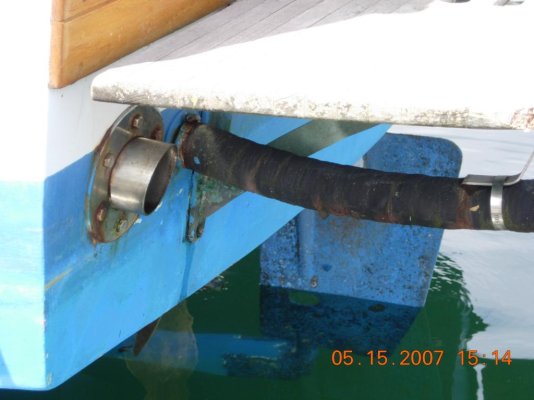I dunno what Dick Gee from Northern Lights, Steve D'Antonio, etc said about engine operations in Passagemaker as I don't read it. However, I can tell you that Dick makes a big distinction between a modern diesel and one from the 1950s, just as anyone who has experience with engines, be they cars, airplanes or boats, knows there are major differences between engines of different eras. Metallurgy was different, design was different, heat tolerance was different, the ability to resist valve float was different, injection systems were different, and on and on and on and on. If I operated the radial engine in the Beaver I fly-- an engine designed well before WWII and built no later than the end of that war--- the same way I operate the current generation of piston engines in the Cessnas I sometimes fly, I'd be dead-sticking the Beaver to an emergency landing pretty quickly. Probably on the first takeoff, actually.
Shoot, even the operational parameters of the engines used on 777s made today are different than the operational parameters of the engines used on early 777s because of advances in everything from metallurgy and ceramics to gas path design, fan blade design, all sorts of things. Run the first engines like the current ones, and the first ones will come apart. And this particular turbofan evolution has only spanned 14 years, not the fifty years that separate the Ford diesel that was used in the FL120 and a modern Lugger, John Deere, Cat, etc.
Dick's advice to my wife and I regarding "old engine operation" extends to more than just the throttle settings, too. For example, he told us with the Ford Lehman 120 to never put multi-viscosity oil in it, and never use synthetic oil in it, both of which are used and recommended by the modern engines his company makes. To be fair, I have talked or corresponded with people who use multi-vis or synthetics in their FL 120s and they claim no problems. And it may in fact be okay, although my NL friend has told me why he doesn't think so.
But the FL 120 established its reputation as a 12,000 to 14,000 hour engine in recreational marine service using single-weight dinosaur oil and relatively conservative power settings back in the 1960s and 70s. American Diesel can cite instances where FL120s went some 25,000 hours before needing an overhaul. So whether or not this kind of operation is good for the engine is not even worth discussing---- it's been proven countless times that it is.
Are there other ways this engine can be run? Continuous high power loadings, high rpms, synthetic oil, etc.? Maybe. But a theory espoused on a forum or by a magazine writer does not carry the same weight in my book as the actual operational history of the engine.
Now if marine diesels only cost a few thousand bucks each like a gas engine it might be worth seeing what would happen if I used current diesel operating philosophy on an engine that was designed and built before many of the people preaching this philosophy were born. But it would cost us about $50,000 to repower our GB if the experiment didn't work. So in this case, it seems to me to make more sense to stick with what's already been proven to work wonderfully. The fact it's also the way the people who really know this engine recommend to operate it pretty much seals the deal, at least to my way of thinking.
Don 't forget, the Ford of England Dorset engine--- the engine the Ford Lehman 120 is based on--- was a complete failure as a truck engine, which is what it was designed for, because it proved to be very trouble-prone when operated at the higher end of its rpm band and under high power loadings. One specific I have read about this engine was that when operated a lot at higher rpms the fuel injection pump failed fairly quickly to the point where it was not uncommon to have to replace the pump two to four times a year. Where the Ford Dorset proved very successful and extremely reliable was in relatively low power, relatively constant but moderate rpm applications like cranes, generators, pumps, and smaller farm tractors. Which is why, when you look at the manual, it is referred to by Ford as an "industrial" engine. Which is also why it proved--- at the time--- to be an ideal engine to power slow boats like recreational trawlers.
-- Edited by Marin at 03:06, 2008-02-12

